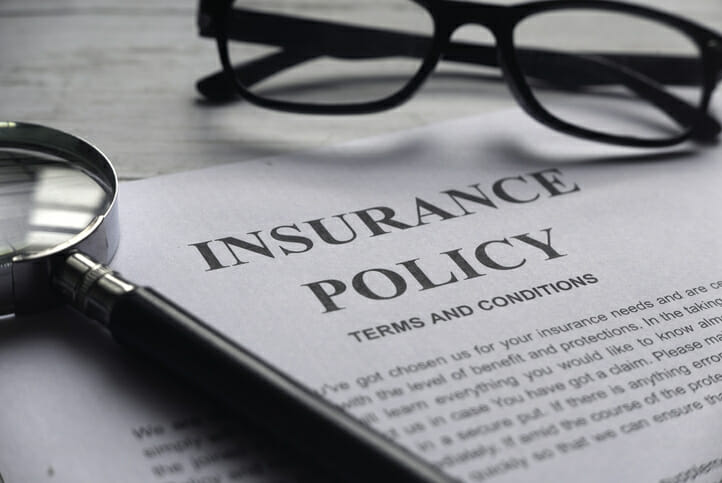Insurance is designed to protect you financially when the unexpected happens. Whether you’re buying a car or a home, renting an apartment or starting a family, there are different types of insurance policies you can purchase for financial reassurance. Understanding the different parts of an insurance policy isn’t a prerequisite for buying coverage. But it can help you to make sense of what’s covered and what conditions may apply should you need to file a claim.
A financial advisor can help you compare different types of insurance coverage for your needs.
Understanding the Parts of an Insurance Policy

An insurance policy is a contract between yourself and an insurance company. You pay a premium to the insurer for your coverage. In return, the insurer can pay money back to you if you need to file a claim. Depending on the type of insurance contract, you may also need to pay a deductible before the insurance company pays anything out. In the case of life insurance, the insurance company would pay out a death benefit to your beneficiaries when you pass away.
While each policy is different, in terms of what’s covered, the key parts of an insurance policy remain the same. Here are five parts you should know:
1. Declaration page. The declaration page is usually the first page of an insurance policy. It may be limited to one page or it may be longer. This page outlines the most important details of the policy in brief. For example, a declarations page typically includes:
- Names of covered persons
- Policy type
- Policy number and period for which the policy is effective
- Premium amount
- Coverage limits
- Deductible amounts
- Endorsements
- Applied discounts
If an insurance policy covers specific assets, such as a home or personal possessions, those would also be listed on the declaration page.
2. Insuring agreement. The insuring agreement is a broad summary of the policy’s coverage. This part of an insurance contract will specify:
- Who is covered
- What is covered
- The insurer’s responsibilities to the insured
The form the insuring agreement takes can depend on the type of insurance policy. For example, if you’re buying homeowner’s insurance the insuring agreement should include named-perils coverage. If an event is listed under named-perils coverage then it’s covered by the policy. Typically named perils for homeowner’s insurance include damage caused by fire or lightning. If a peril is not included in the insuring agreement, then it isn’t covered by the policy.
All-risk coverage is different. With this type of insuring agreement, all losses are covered by the policy with the exception of losses that are specifically excluded. So if something is not excluded or left out of the insuring agreement, then it’s covered. Life insurance is an example of all-risk coverage.
3. Exclusions, limitations and conditions. The insuring agreement provides a broad overview of the policy’s coverage. Separate sections for exclusions, limitations and conditions offer a more detailed look at what’s covered – and what’s not.
The exclusions section is where you’ll find a list of things not covered by the policy. Exclusions can include specific losses, perils or property types. With homeowner’s insurance, for example, floods and other hazards are usually listed under exclusions. If you think you might need flood insurance or you want to have it just in case, you typically have to purchase that coverage separately.
The limitations section details the limits on coverage. For example, if you own a home there may be a maximum upper limit on its replacement value if the property is damaged and considered to be a total loss. With auto insurance, there are typically upper limits on how much the policy will pay out for things like bodily injury and liability coverage.
The conditions section explains your responsibilities as the insured. So, say your home is damaged following a burglary, which is a covered peril by your policy. Filing a police report and documenting the damage with photos may be conditions of filing a claim. Your insurance company may also place conditions on the period in which you’re allowed to file a claim.
4. Riders. An insurance rider is a form of add-on coverage that can enhance your policy. With life insurance, for example, you may choose to add on an accelerated death benefit rider. This rider allows the insurance company to pay out money to you to cover end-of-life care and deduct those amounts from the death benefit that’s paid to your beneficiaries.
Riders are optional but if you include them in an insurance policy, those would be listed in their own section in the contract. Your insurance company can also modify the terms of your agreement through an endorsement. If your policy is coming up for renewal, for example, that could mean a change in premiums.
Endorsements are usually included in the same section as riders, though they may be listed separately. If your policy has any riders or endorsements, it’s important to read them carefully to be sure you understand what changes have been made.
5. Definitions. Insurance policies usually have a section for definitions, where key terms are defined. Reading this part of your insurance policy can help you to better understand what you’re agreeing to if you’re unfamiliar with the typical insurance jargon.
Choosing an Insurance Policy
Insurance is designed to meet a wide variety of needs. For example, you may purchase renter’s insurance to protect your possessions if you rent or homeowner’s insurance if you own property. Auto insurance protects your vehicle while disability insurance can provide you with income if you’re temporarily unable to work. You can also get insurance for your business and for your life, to provide some financial protection to your loved ones.
If you need to purchase insurance, there are things to consider when searching for the right policy:
- What type of coverage do I need?
- How much coverage do I need?
- What kind of premiums can I afford?
- Will I need to pay a deductible and if so, how much can I afford?
- Is there anything the policy won’t cover?
- How easy is it to file a claim?
You can compare insurance costs by getting quotes online. You can also talk to your financial advisor about what kind of insurance you might need to fill coverage gaps.
Bottom Line

Unless you’re an insurance agent or you work in the industry, you may not give much thought to the inner workings of your coverage. But knowing the various parts of an insurance policy matters when purchasing insurance and should you need to file a claim. That way, there’s no room for surprises about what’s covered and what isn’t.
Insurance Planning Tips
- Consider talking to a financial advisor about what kind of insurance coverage you most likely need to have. If you don’t have a financial advisor yet, finding one doesn’t have to be complicated. SmartAsset’s free tool matches you with up to three financial advisors who serve your area, and you can interview your advisor matches at no cost to decide which one is right for you. If you’re ready to find an advisor who can help you achieve your financial goals, get started now.
- Once you buy insurance, it’s helpful to review your coverage and premium costs periodically to ensure that it still meets your needs. With car insurance, for example, you may want to shop around for better rates ahead of your renewal to see if you can find a better deal. And with life insurance, it’s important to consider whether your current policy is sufficient as you go through different life stages.
Photo credit: ©iStock.com/Weekend Images Inc., ©iStock.com/Mohamad Faizal Bin Ramli, ©iStock.com/ljubaphoto
